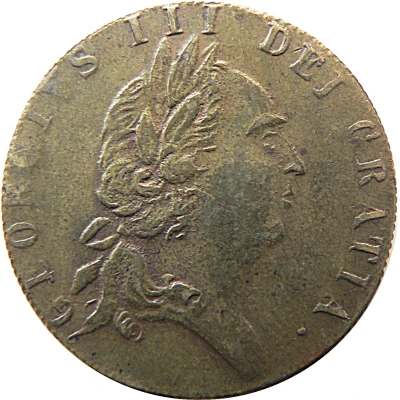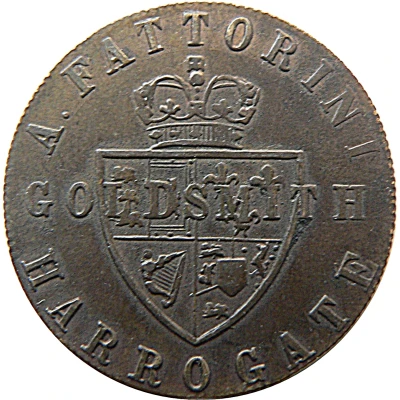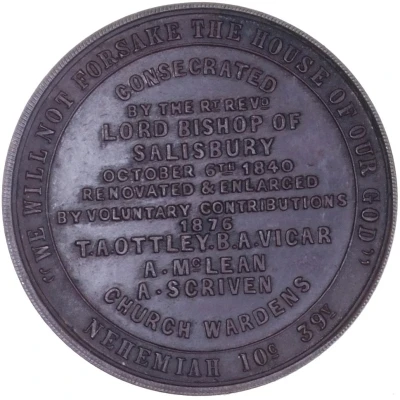


Token - A. Fattorini Goldsmiths Harrogate ND
| Brass | - | 25 mm |
| Location | United Kingdom (United Kingdom, British Overseas Territories and Crown Dependencies) |
|---|---|
| Type | Medals › Advertising medallions |
| Years | 1875-1895 |
| Composition | Brass |
| Diameter | 25 mm |
| Thickness | 0.5 mm |
| Shape | Round |
| Orientation | Medal alignment ↑↑ |
| Updated | 2024-11-14 |
| Numista | N#108852 |
|---|---|
| Rarity index | 90% |
Reverse
Crowned shield (including a harp and Brunswick Arms), lettering around and superimposed thereon.
Script: Latin
Lettering: A. FATTORINI GOLDSMITH HARROGATE
Edge
Milled
Comment
Hawkins 44
George III Spade Guinea token advertising Fattorini Goldsmiths in Harrogate.
Great Britain went through an economic and political upheaval during the period of 1790 to about 1812. The emergency money produced by private companies and even individuals was cataloged by James Conder and was first published in 1798. It wasn’t until 1892 that this body of information was formally updated.
The tokens were half penny and penny size and were used as these denominations in lieu of money from the government. The tokens became almost a directory of all the names of the small towns in England as well as a record of historical events and political attitudes of the time.
Years after the Conder tokens, jewellers sold them as nostalgia or as badges of the Town mentioned on the token. It is signed by the jeweler and has his location, Harrogate, in Yorkshire. Though this token is probably not a Conder piece (though it follows the style), it might have been made to commemorate the death of George III in 1820.
Catalogue references: Bryce-Neilsen 7190, 7200, 7210.
Fattorini & Sons was a jewellery business established by a family of Italian immigrants who arrived in the British city of Leeds, in Yorkshire, England in the early 19th century. Antonio Fattorini opened a shop in Harrogate to take advantage of seasonal trade in Harrogate in 1831, and this business is still today owned and run by descendants of the founders. In the 1850's he opened a shop in Bradford with two of his sons. In 1883 the firm made the first ever chess clock comprising two linked pendulum clocks.



